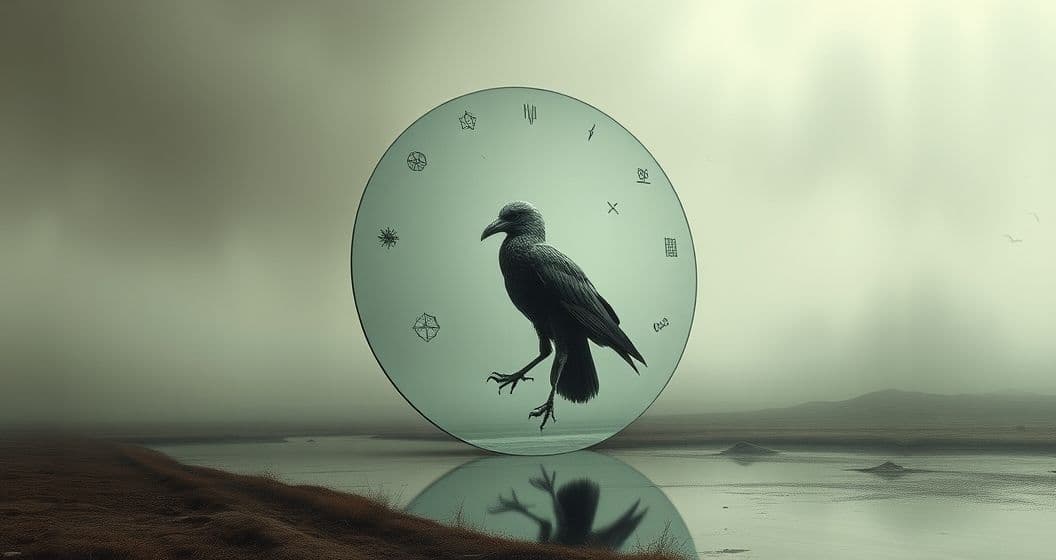Core Symbols: Dead Birds, Sigils, and Mirrors in Dreamscapes
Dead birds in dreams rarely signify literal death; instead, they’re often messengers of emotional or psychological endings. In dream lore, birds traditionally represent freedom, spiritual connection, and the voice of intuition—so a lifeless bird can symbolize a stifled part of yourself: a dream deferred, a relationship that’s lost its vitality, or a creative spark that’s dimmed. When paired with sigils, these symbols take on personal meaning: sigils are ancient tools of intention, often appearing in dreams as recurring marks, shapes, or symbols that feel charged with purpose. They might emerge from your subconscious to guide you toward healing or transformation.
Mirrors in dreams amplify this symbolism by reflecting your inner world. A mirror showing a dead bird isn’t just a reflection—it’s a dialogue between your conscious self and the parts of you that feel “dead.” The mirror could reveal how you perceive your own limitations, or it might be a call to confront unacknowledged pain. Imagine a dream where a dead bird lies still in a mirror’s surface, its eyes closed yet somehow staring back—this isn’t just a dead symbol; it’s your psyche asking, What part of me have I stopped seeing?
Psychology Lens: The Science and Archetypes Behind the Imagery
Want a More Personalized Interpretation?
Get your own AI-powered dream analysis tailored specifically to your dream
🔮Try Dream Analysis FreeFrom a psychological perspective, dead birds often mirror the “death of the ego” (Jungian shadow work) or repressed emotions (Freudian theory). Carl Jung believed dreams were bridges between the conscious and unconscious, with symbols like dead birds representing the need to integrate fragmented parts of the self. The sigil, in this framework, might be a “synchronicity” symbol—a sign your subconscious is trying to communicate a message too subtle for waking thought.
Neuroscience adds another layer: during REM sleep, the brain processes unprocessed emotions, turning them into symbolic imagery. A dead bird could be your brain’s way of processing grief, burnout, or the loss of a role you once cherished. The mirror effect? It’s your prefrontal cortex reflecting on how these emotions impact your self-image. For example, someone grieving a pet might see a dead bird in a mirror, their brain linking the loss of a loved one to the loss of a “free-spirited” part of themselves.
Life Triggers: What Real-Life Events Spark These Dreams?
Dead bird dreams often surface during periods of transition. If you’ve recently ended a relationship, lost a job, or faced a personal setback, your subconscious might use the dead bird as a metaphor for that closure. Sigils in these dreams rarely appear randomly—they might echo symbols from your daily life: a logo from a job you left, a tattoo you saw, or even a doodle you drew. For instance, someone who’s been ignoring their creative side might dream of a dead bird with a sigil that resembles a paintbrush—a sign to resurrect that passion.
Mirrors in dead bird dreams often reflect self-criticism or unmet expectations. If you’re feeling pressured to conform to others’ ideals, the mirror might show a dead bird as a representation of your “authentic self” being smothered. A parent who’s lost control over their child’s life might dream of a dead bird in a mirror, the sigil a reminder to reclaim agency over their own choices.
What To Do Next: Turning Dream Symbols Into Actionable Insight
Start with short-term reflection: Grab a notebook and write down the dream’s details. Ask yourself: What emotions did I feel? (Grief? Relief? Fear?) What part of my life feels “dead” right now? (Career? Relationship? Creativity?) The sigil’s shape or pattern might hold clues—sketch it if you can, or look for recurring symbols in your waking life.
Medium-term experimentation: Create a “safe space” for the dead bird’s message. If the sigil feels like a tool, try incorporating it into a ritual—light a candle, write a letter to the “dead” part of yourself, or paint the sigil on paper. This isn’t about magic; it’s about giving your subconscious permission to process emotions.
Long-term integration: Notice how the dream’s themes echo your daily life. If the dead bird symbolizes a stalled project, ask: What small step can I take to revive it? If the mirror shows self-doubt, practice self-compassion exercises. Dreams are guides, not predictions—they’re invitations to grow.
FAQ
Q: Why do I keep dreaming about dead birds, even when I’m not grieving?
A: Recurring dead bird dreams often signal unprocessed emotions—stress, burnout, or suppressed creativity. Your subconscious may be urging you to address these “dead” parts before they feel overwhelming.
Q: What if the sigil in my dream is one I’ve never seen before?
A: Unfamiliar sigils in dreams are usually personal symbols of your unique journey. They might represent a new goal, a fear, or a part of yourself you’re just beginning to explore.
Q: Does the type of bird matter in dead bird dreams?
A: Yes! A sparrow might symbolize small losses, while an eagle could represent a lost sense of power. The bird’s species adds nuance to the message, but the core theme of “death” and “rebirth” remains universal.
